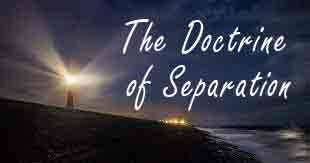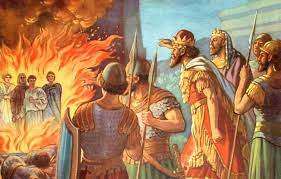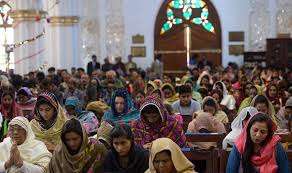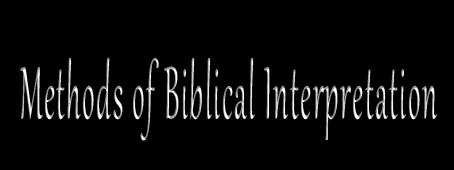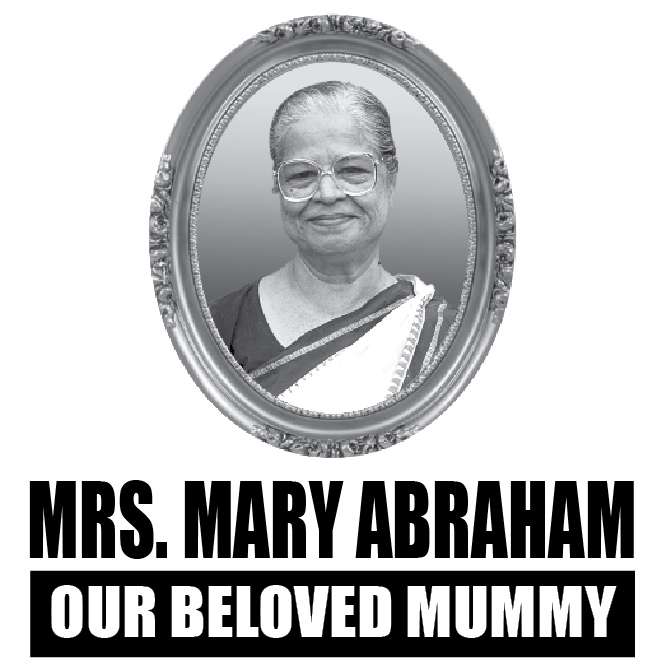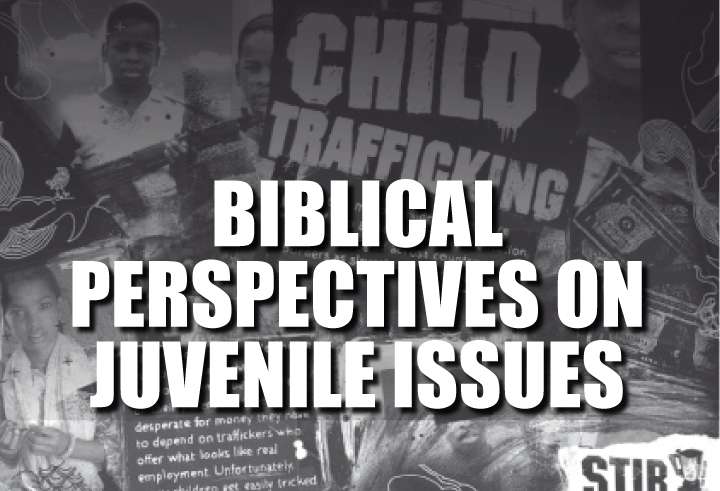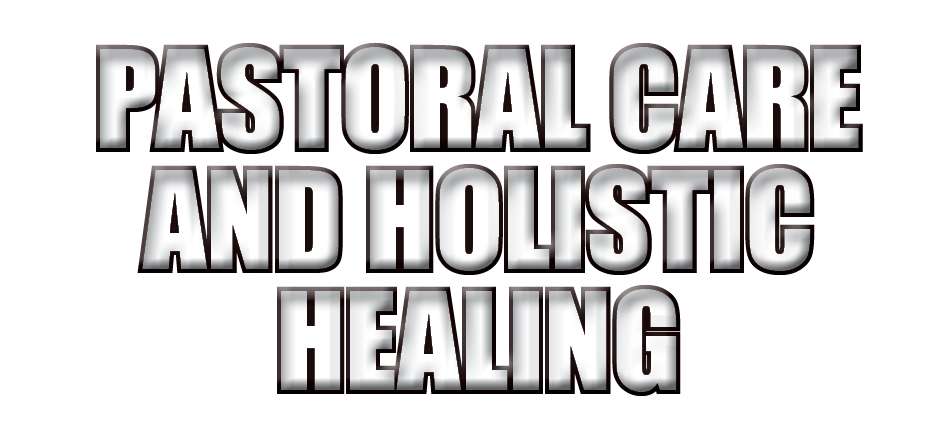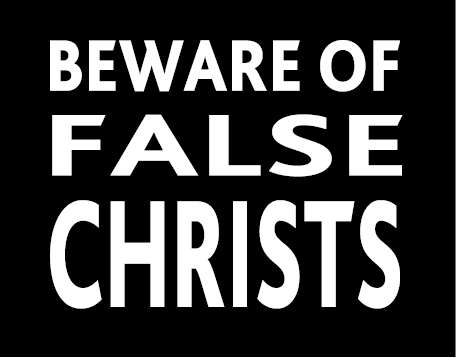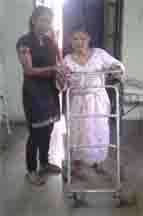

Ministry int the Context of Disability - A Biblical Perspective
Dr. Saju Joseph
Disability is a sad reality in human society. It is a matter of sorrow for the disabled as well as their immediate relatives. Generally, disabled people are subject to social discrimination, negatively affecting their self esteem thus leading to psychological problems. It is true that the church has not given due attention to disabled persons.
Popular views in the past
Old traditions of confusion and fear relate to the explanation of causes of ill-health, particularly chronic ill-health. For many centuries, in Europe, leprosy was considered a crime and the disfigurement it produced was considered as divine punishment for sin. Accordingly, lepers were treated as criminals who were to be locked away from society.
Until almost the end of the nineteenth century mental illness was considered ‘akin to crime’ and in the very few hospitals which catered for the mentally ill, the patients were confined to cells and chains. Mental retardation, till recent times was confused with mental illness and mentally retarded persons were locked in mental hospitals and asylums.
Definition
The World Health Organization defines ‘disability’ as follows: “ ‘Disabilities’ is an umbrella term, covering impairments, activity limitations, and participation restrictions. ‘Impairment’ is a problem in body function or structure; an ‘activity limitation’ is a difficulty encountered by an individual in executing a task or action; while ‘a participation restriction’ is a problem experienced by an individual in involvement in life situations. Thus disability is a complex phenomenon, reflecting an interaction between features of a person’s body and features of the society in which he or she lives.”
A physical impairment is any disability which limits the physical function of limbs or fine or gross motor ability. There are physical, vision, hearing, speech, mental and learning disabilities.
Disability in India
India, the largest democratic and the second most populous country in the world has, as per the official estimates, 55 million disabled people of different age group. In the other words, 10% of the Indian people are disabled. The disabled in Indian context usually constitute four categories. Visually handicapped (blind), orthopedically handicapped, hearing impaired (deaf and dumb) and mentally retarded.
Disability versus Perfection
The biggest ongoing struggle to deal with, especially within the church is the concept of perfection - the idea of needing to be flawless before God. In religion, perfection was usually connected to spirituality but, recently some began to promote physical perfection as necessary for truly serving God. Today, both in East and West, perfection (or at least the absence of any visible physical flaws) is worshipped. We all hear about the millions of dollars spent on cosmetic procedures and the obsession with having an attractive body. Parents are now bringing “wrongful life” lawsuits against doctors if the doctor doesn’t inform them with enough time to abort their child which will have a defect.
Disability and the Bible
Bible speaks about disability - both spiritual and physical; allegorical and literal. There are people who argue that even the Bible itself is guilty of blatant discrimination against those who are different. The “holiness code” in Leviticus rules that any person with the least impairment is barred from serving in the priesthood (Lev. 21:17-20).The code also requires that animals to be offered in sacrifice must be without blemish (Lev. 22:22)! Of course, we have long since stopped the practice of animal sacrifice, but it is long past time to stop rejecting, mistreating, or ignoring people with disabilities--in the church, as well as, throughout society.
According to the Bible, every human being is created in God’s likeness regardless of their physical or mental capacities. The love that God has for every being also applies to people with different kind of disabilities. The Old Testament tells its readers to treat people with disabilities justly and fairly. So Moses tells people that to mislead a blind man on a road will lead to a curse (Deut 27:18).
Disability in Old Testament
There are a lot of scriptures that list disability as a punishment inflicted by God to anyone who disobeys religious law; see Deut. 28: 27-29. It is written in 2 Kings 6:18 that God punished Elisha’s enemy with blindness. Zach.12:4 says that horses will be blinded to punish mankind.
Disability was also listed many times as a blemish or defilement. Leviticus 21:16-23. The Pharisees, the religious teachers at that time, continued this theology throughout the life and time that Jesus walked on earth.
Several words in the Old Testament describe typical disabilities and deformities: ‘Blemish’ meant a deformity or spot (Leviticus 21:17-21). The NIV translates this word “defect”. A person with a blemish was disqualified from priesthood. Blindness (Deuteronomy 28:28) caused from eye infections was common during Bible times. Heat, dust, sunlight, and unclean habits all contributed to the spread of eye diseases which often resulted in blindness. Broken hand or broken foot disqualified one from priesthood (Leviticus 21:19).Congenital malformations were extra body parts such as six toes (2 Samuel 21:20). Dwarfs were barred from priestly duties (Leviticus 21:20), hunch back were all seen as gross disabilities.
Jesus, on the other hand, interacted with many disabled people. He was undoubtedly, the first disability activist! He was always in trouble with the religious in his day for healing persons with disabilities. In John 9, one of Jesus’ own disciples asked him, “who sinned, this man or his parents that he was born blind.” Jesus replied, “neither,” and then he healed the blind man.
Jesus wanted the disabled to be involved in the social life of the community. He said in Luke 14:12, “When you have dinner, don’t invite your friends or relatives, or your rich neighbors. If you do, they will invite you to their house in return and you will be repaid. Instead invite the poor, the lame, and the blind, the crippled and you will be blessed and repaid at the resurrection.”
However, apparently it was taught in Old Testament theology that persons with disabilities should be excluded from religion. But we have examples in the Old Testament itself for approval and acceptance for the disabled persons. In Exodus Chapter 4 God approves and calls Moses who has a stammering tongue for ministry and deliverance of Israel from Egypt. In 1 Samuel 16 and II Samuel 9 we see David and Mephibosheth, the biblical characters with disability as a sustained character trait. The story of David contains some of the Bible’s most striking images of disability. In comparison with King Saul of Israel and General Goliath of Philistines, David is a disabled one in the sense of his small stature, less physical strength, and lack of training and armament. Still God accepts him, anoints him and uses him for the ministry for the people. David accepts Mephibosheth as he is and extends care and provision for him.
Disability in the New Testament
Among the disabilities and deformities mentioned in the New Testament are deafness or dumbness resulting in the inability to speak or hear (Mark 7:32). Some cases of deafness were temporary (Luke 1:20). Strict laws isolated persons with leprosy. Paralysis (Luke 5:18) often resulted from injuries to the spine. Withered hand and skin (Matthew 12:10) often resulted from the shrinking of the bones, muscles, or both. The result was loss of nerve power or stiffening of the joints.
One difficulty in studying Bible passages about disabilities and deformities arises from the fact that people during Bible times connected virtue with physical wellness. One general view toward disabilities and deformities was that these afflictions were sent by God as punishment for sin (Deuteronomy 32:39; John 9:2). Some disabilities and deformities were believed to have resulted from demonic activity (Mark 9:17). Jesus brought God’s kingdom in which people with deformities and disabilities were accepted and could be healed.
Christ announced his mission in the synagogue in Nazareth as follows: The spirit of the Lord . . . anointed me to preach the good news to the poor. He sent me to proclaim freedom for the prisoners, and the recovery of sight for the blind, to release the oppressed, to proclaim the year of the Lord’s favor (Luke 4: 18-19).
Indeed, the four gospels show Jesus spent much time with the “least” in society, and he displayed great compassion for PWD (Person With Disability.) Concern for people with disabilities was one of the prominent notes of Jesus’ earthly ministry.
The healing acts of Jesus - for example, the healing of the blind man in John 9 or the man with leprosy in Mark 1:40-45, who asks Jesus to make him clean - suggests ways in which Jesus restores people to their community. In like manner, in Mark 2:1-12, Jesus met the paralytic and forgave him his sins. Forgiving sins here means removing the stigma imposed on him by a culture in which disabilities are associated with sin or where someone is ostracized as sinful and unworthy of his society’s acceptance.
In these healing stories, Jesus primarily removes societal barriers in order to create accessible and accepting communities. By healing (not merely curing) PWD, Jesus brought them to the mainstream of society. Jesus created an inclusive community where no one was excluded on the basis of ability- disability. Likewise, the mission of the church is to make sure that existing walls of discrimination in society are removed. It must be noted that Jesus did not make a distinction between social restoration and physical healing. Both always happened at any given time of healing. Consequently, the integral relationship of health, salvation, and healing is an imperative for a holistic theological interpretation of disability.
Disability and Eschatological views in the Bible
People quote scripture like Revelation 21:4 in talking about how human body will look like in heaven and not be “broken”. The thing a lot of people miss is that a lot of tears, sorrow and pain come from the way people view the disabled – which is what’s more important to be wiped away in heaven. In His sermon on the mount, Jesus said, “If you are right eye causes you to sin, gouge it out and throw it away … It is better for you to lose one part of your body than for your whole body to go into hell” Mathew 5: 29, 30. This is Biblical evidence that disabled people are not denied entrance to heaven. If the disabled are not prevented in heaven, how much more the church of God on earth should permit the disabled to participate in the church services, fellowships and normal community life.
Apostle John teaches in his epistle, “But we know that when He appears we shall be like him, for we shall see him as he is”( I John 3:2) . Here also the disabled have the eschatological hope of perfection.
Conclusion
As we understand the Old Testament writings in its literary sense it seemed to marginalize the disabled. But in the typological understanding the physical disability implies the spiritual imperfectness or the sinful state of the fallen man. In such a perspective the physical or mentally disabled represent the sinful human being who lost the glory of God. However, in the Old Testament also God heals the sick and the disabled. Sarah, the wife of Abraham and Hannah, the wife of Elkanah who were healed of infertility, Naaman, the military General of the Syrian Army who was healed of leprosy are examples for God’s concern for the problems of the disabled. Again, the stories of Moses, David and Mephibosheth – who were all used despite their disability conveys the message of God’s unconditional positive regard for a person.
In the New Testament the ministry of Jesus revealed the need for a holistic healing or a comprehensive wholeness for each human being. Jesus’ healing ministries as well as His teaching explains His attitude towards the disabled. Through healing, Jesus was not only restoring the physical wholeness of the people but also the social and spiritual well being and acceptance in the community. This Jesus model in the Bible should be followed by the Church today in its ministry towards the disabled.



